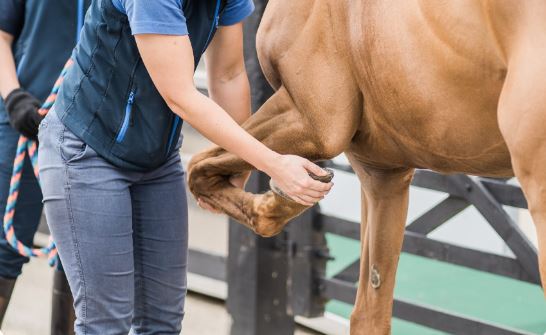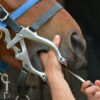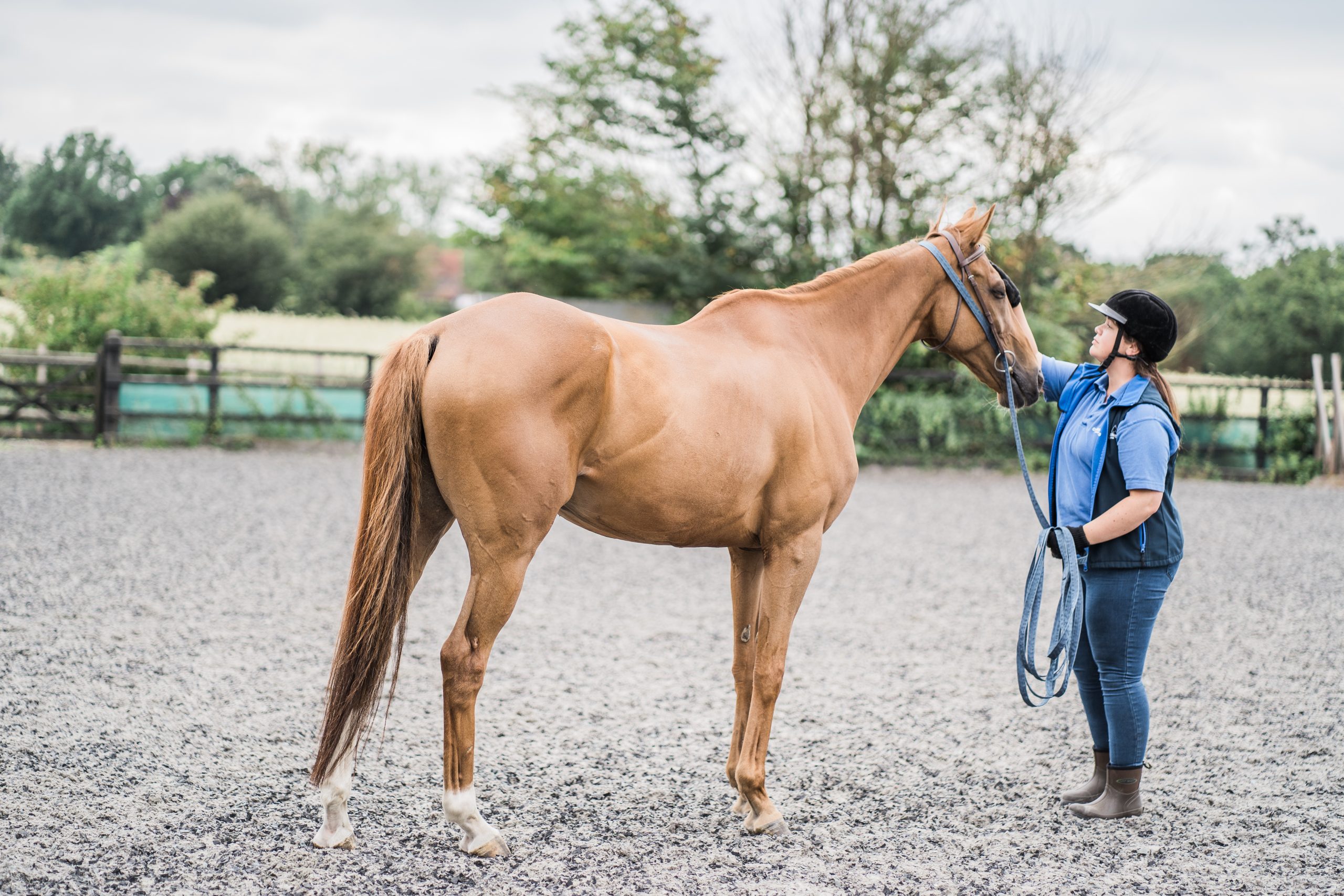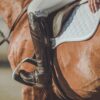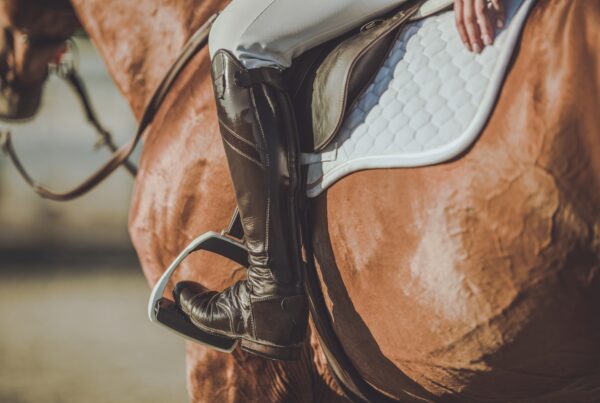At Clarendon Equine we use Sleip gait analysis software as part of our lameness investigations. This software uses artificial intelligence (AI) motion analysis to detect and quantify asymmetries in a horse’s gait, helping to identify lameness early, guide investigation and monitor response to treatment.
But what exactly is AI? How does the SLEIP software work? And how can all this benefit you and your horse? Let’s take a closer look.
What is artificial intelligence (AI)?
AI is technology that allows computers to emulate human intelligence, solving problems or generating art or writing.
One useful aspect of AI is computer vision – the ability to recognise objects and actions from images. In gait analysis, the object would be the horse and certain points on it, and the action would be the movement of the head and pelvis. Computers can learn to derive information from these images and actions, in this case identifying asymmetry in movement that can suggest lameness in one or more limbs.
AI technology is used in many industries as well as in the military field, to identify and analyse human behaviours. In the medical domain AI is increasingly being employed to analyse scans, for example in the detection of breast cancer, or to map skin moles to aid early identification of skin cancer. This does not replace existing diagnostics but rather supplements them, and the same can be said of the use of AI in veterinary medicine.
Why use AI – can’t my vet identify the lameness?
Traditionally, lameness evaluation has relied on a vet taking a history of what has been happening with the horse recently, examining the horse thoroughly to rule out other illness, and then assessing movement visually by watching the horse walk and trot up in a straight line and in a circle.
There are limitations of this visual assessment however;
- The human eye can process fewer images per second than technology can, meaning that we humans (even the best equine specialist vet you’ve ever had!) cannot identify the very smallest of changes in gait, which are often the earliest indicators of a problem. The earlier we can detect lameness the better from a treatment response and recovery time point of view
- It has been demonstrated that showing a single video of a lame horse to any one person, on two separate occasions, will result in a slightly different evaluation each time, even though the evaluator is the same individual. So, there is inconsistency in human analysis which is reduced by using AI.
- Evaluation of lameness is subjective and even between experts, agreement on which leg is the primary problem is not always guaranteed, never mind determining what grade that lameness is and whether there has been improvement or deterioration over time. This is further complicated where follow-up assessments cannot always be with the same vet, or when a referral is made to another veterinary professional.
- The view of the evaluator can be influenced by knowledge of what else has happened, for example a vet having performed a nerve block on one limb is looking for improvement in that limb and may not see overall changes in the horse objectively.
So, while technology cannot replace your vet, it can certainly help to guide lameness investigation, to detect very subtle, early changes not appreciable to the human eye, and to quantify data, reducing subjective variation and allowing for evidence-based decision making and monitoring. It can also aid communication between a network of veterinary professionals working with your horse.
How does Sleip work?
Sleip evolved from the long-held vision of Swedish veterinary professor Ingvar Fredricson, father of top showjumpers Peder and Jens Fredricson, who was determined that horse welfare could be improved through better lameness detection and prevention. Ingvar spent over 50 years specialising in the field of equine biomechanics and pioneered the use of high-speed video technology to film horses on a treadmill, allowing assessment of movement at a level of detail that the human eye alone was not fast enough to pick up on.
As new technologies emerged, movement assessment progressed to the use of multi-camera marker-based motion capture systems to look at asymmetries of the gait as an indicator of lameness. Unfortunately, due to the specialist equipment required, this system was/is not readily accessible to many horses, owners or vets worldwide.
Researchers at the Locomotion Lab, founded by Professor Fredricson in Uppsala, Sweden, have more recently been able to harness developments in AI and computer vision to create Sleip, a markerless system, requiring only a single phone camera to capture video.
To use Sleip, your horse will be recorded trotting away from and towards the camera for a minimum of 20 strides in each direction, both in a straight line and in a circle. The Sleip software then measures variations in head movement and pelvic symmetry from the video and analyses this data to give quantitative information on each of the four limbs, at both the impact and push-off phases of the stride.
Your vet will consider this information alongside their other clinical findings and history, to guide further investigations. Repeating use of Sleip during these investigations can demonstrate and quantify any improvements, for example following nerve blocks, and this can help your vet to narrow down the exact cause of the lameness.
Once a diagnosis has been reached and treatment has begun, your vet can, where appropriate, invite you to upload follow-up videos taken by yourself. This allows for regular objective monitoring and quantification of the response to treatment without always having to get the vet back on site or taking your horse into the clinic.
Do I still need my vet to identify lameness, or can I use the software myself?
The Sleip software is a fantastic addition to your vet’s toolkit, however it does not replace your vet! As part of any lameness examination your vet will assess your horse as a whole, checking for underlying causes of lameness. These may include neurological deficits, metabolic changes, environmental factors, systemic diseases (such as Cushing’s or equine metabolic syndrome), cardiovascular diseases, respiratory abnormalities, infectious diseases, variations in conformation, hoof condition, and shoeing.
While AI technology may be useful in identifying affected limbs and even which phase of the stride is asymmetrical, it cannot locate the exact source of the problem i.e. which structures of the limb are affected, nor does it take account of other diagnostic findings such as a neurological examination.
As with any diagnostic test, results must be interpreted with the patient in mind. Technology such as Sleip can be considered like a microscope, giving an in-depth view of one particular area of your horse’s health, but it does not know you or your horse as an individual, nor your environment, facilities or goals.
The future
The developers of Sleip hope in the future to be able to open up the technology to involve a network of professionals around your horse, for example sharing the vet’s findings with farriers and equine physiotherapists.
You can find out more about this amazing technology here or by contacting us to discuss how Sleip technology might benefit your horse.


